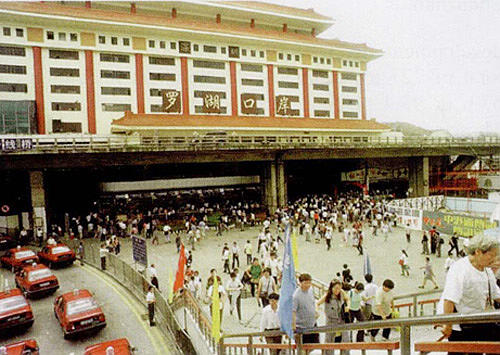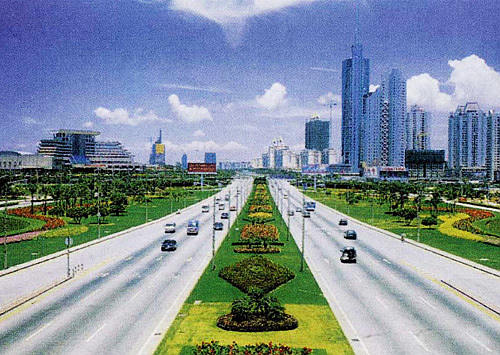|
 |
|
The Luohu Port Building (CHEN XUESI) |
Strategic restructuring of SOEs is actively being undertaken in Shenzhen following the principle of "improving the management of large enterprises while relaxing control over small ones". Benefiting from efforts made to perfect the corporate system and reform the administration of SOE cadres, a complete set of systems involving stimulation, competition, responsibility, supervision and restriction, which adapt to a market economic structure, have gradually been established in the SOEs in Shenzhen. Their major economic performance indices, such as the return on gross assets, profit on net assets, profitable range, sales profit ratio and rate of return, have therefore maintained the national advanced level for several years running since 1995.
Meanwhile, Shenzhen has taken practical measures to quicken the transformation of government functions and build a market environment featuring fair competition. It led the country in reforming the administrative examination and approval system, greatly simplifying related procedures and standardizing necessary conducts. The reform of port administration, social security, fiscal and taxation, labor and other supporting systems has been intensified. Various reforms have jointly promoted the establishment of a modern market system that conforms with international practices and the framework of a socialist market economic structure.
At the forefront of China's reform and opening-up drive, Shenzhen has energetically introduced foreign capital, as well as advanced technologies and management expertise. Relying on consistent innovation and active participation in international competition and cooperation, it has initially set up an export-oriented economic pattern on the basis of an all-round opening to the outside world.
The opening of Shenzhen's economy is higher than the average level of large and medium-sized Chinese cities, achieving a complete transition from an isolated economy to an advanced export-oriented economy. The actual foreign capital used by Shenzhen over the past 20 years has exceeded $20 billion, of which $12.3 billion or two-thirds of the total was used in the past five years.
Foreign investors from 67 countries and regions around the world, including 76 on Fortune magazine's Top 500 List, have set up more than 14,000 foreign-funded enterprises in Shenzhen. Shenzhen's total imports and exports were valued at $50.4 billion in 1999. Its export volume, amounting to $28.2 billion and accounting for one-seventh of the country's total last year, has topped China's major cities for seven successive years. Shenzhen has become a major import and export base for China.
 |
|
Shennan Boulevard - a major artery in Shenzhen (WU MING) |
Development of high-tech industry
Since the beginning of the 1990s, Shenzhen has taken the initiative in adapting itself to the approaching of a knowledge economy. It has seized the opportunities resulting from swift technological development and profound economic restructuring around the world and has made great efforts to develop a high-tech industry with the information technology as a key part. The output value of the city's high-tech industry reached 81.979 billion yuan in 1999, making up 40.5 percent of the total industrial output value. The high-tech industry has recorded the highest growth and become a principal driving force of Shenzhen's economy.
| 